Application of Information Technologies and Programming Methods of Embedded Systems for Complex Intellectual Analysis
Abstract
1. Introduction
2. Information Model of the Intelligent Metallographic Analysis System
- (1)
- After preparation, the metal sample under analysis is placed on the desktop of the measurement subsystem (microscope). The digital video camera receives the image P(x, y) and transfers it to the computer in the digitized form as a stream of video information.
- (2)
- This stream goes to the input of specialized software. Since certain requirements are imposed on the image, which it should comply with, before further actions, the processing module makes changes to the image structure:
- (3)
- Next, the image characteristics are sent to the input XNN of the neural network subsystem. The neural network module analyzes them and generates a recognition result YNN:
- (4)
- In addition, the server accumulates the results of performance and by means of an expert subsystem allows one to evaluate the properties of the metal:
- (5)
- After processing the information and developing control recommendations, the data are fed to the information display subsystem, which by means of the diagrams displays the result of the research. If required, it is possible to create reports on the study of the sample with recommendations using the reporting subsystem.
3. Expert Subsystem for the Metallographic Analysis
- (1)
- Acquisition of knowledge, i.e., accumulation of the database of metal microstructures images and their characteristics;
- (2)
- Presentation of knowledge, i.e., presentation of the received information regarding the tested metal sample in a form convenient for the technologist;
- (3)
- Management of the solution search process, i.e., the search for a solution (precedent of metallographic analysis), based on the received information about the metal sample;
- (4)
- Clarification of the decision made, i.e., presentation of the decision or expert conclusion about the tested metal sample in a form convenient for the technologist.
- the program generator forms a solver using knowledge of metallographic analysis;
- the interpreter provides the choice and display of an expert reasoning about the tested metal sample.
- interface knowledge is the knowledge of interaction with the environment, i.e., about users (technologists) who are allowed access to the system;
- domain knowledge is the knowledge of the domain, representing quantitative and qualitative characteristics of metals, as well as the rules for their evaluation and interpretation;
- procedural knowledge is the knowledge of methods for solving the problem, i.e., information about the type of metallographic analysis and the required expert characteristics of the metal;
- structural knowledge is that about the image of the metal microstructure and expert judgment based on the quantitative characteristics of the metal.
- grain point (MG);
- temper (C);
- defect category (Td);
- ferrite/perlite phase ratio (F);
- class of non-metallic inclusions (Tnm);
- others.
- for algorithm “gd”—290 epochs;
- for algorithm “gda”—350 epochs;
- for algorithm “cgb”—270 epochs.
4. Development and Research of the Intelligent System for the Metallographic Analysis
- a metallographic complex (microscope and camera with USB-port);
- a personal computer with MetalNeuro software for processing images of metal microstructures and the intellectual analysis of metal data.
| Algorithm 1. A part of the “BackProp.class” code |
|
5. Discussion
6. Conclusions
- (1)
- An information model is proposed, which represents an intelligent system of metallographic analysis in the form of a set of subsystems, the interaction of which ensures the performance of metallographic analysis functions.
- (2)
- The deployment model of an intelligent metallographic analysis system is proposed and described.
- (3)
- The expert subsystem, implemented on the basis of the proposed neural network, allows one to bring the process of metallographic analysis to a whole new level.
- (4)
- An intelligent metallographic analysis system with MetalNeuro software are developed.
Author Contributions
Funding
Acknowledgments
Conflicts of Interest
References
- Kaufman, B.; Briant, C.L. Metallurgical Design and Industry; Springer: Berlin, Germany, 2018; p. 396. [Google Scholar]
- Mihailov, E.; Petkov, V.; Doichev, I.; Boshnakov, K. Model-Based Approach for Investigation of Ladle Lining Damages. Int. Rev. Mech. Eng. 2013, 7, 276–281. [Google Scholar]
- Gordon, Y.; Kumar, S.; Freislich, M.; Yaroshenko, Y. The modern technology of iron and steel production and possible ways of their development. Steel Transl. 2015, 45, 627–634. [Google Scholar] [CrossRef]
- Colpaert, H. Metallography of Steels: Interpretation of Structure and the Effects of Processing; ASM International: Amir, The Netherlands, 2018; p. 699. [Google Scholar]
- Bezyazychnyi, V.F.; Palamar’, I.N.; Azikov, N.S. Automation of Analysis of the Structure of a Material with Details Based on Controlled Functional Systems. J. Mach. Manuf. Reliab. 2020, 49, 341–346. [Google Scholar] [CrossRef]
- Smallman, R.E.; Ashbee, K.H.G. Modern Metallography: The Commonwealth and International Library: Metallurgy Division; Elsevier: Amsterdam, The Netherlands, 2013; p. 224. [Google Scholar]
- Martyushev, N.; Skeeba, V. The method of quantitative automatic metallographic analysis. J. Phys. Conf. Ser. 2017. [Google Scholar] [CrossRef]
- DeCost, B.L.; Holm, E.A. A computer vision approach for automated analysis and classification of microstructural image data. Comput. Mater. Sci. 2015, 110, 126–133. [Google Scholar]
- Niezgoda, S.R.; Kanjarla, A.K.; Kalidindi, S.R. Novel microstructure quantification framework for databasing, visualization, and analysis of microstructure data. Integr. Mater. Manuf. Innovation 2013, 2, 1–27. [Google Scholar] [CrossRef]
- Borrmann, A.; König, M.; Koch, C.; Beetz, J. Building Information Modeling: Technology Foundations and Industry Practice; Springer: Berlin, Germany, 2018; p. 584. [Google Scholar]
- Krutchen, P. The Rational Unified Process—An Introduction, 3rd ed.; Addison-Wesley: Boston, MA, USA, 2003; p. 332. [Google Scholar]
- Booch, G.; Rumbaugh, J.; Jacobson, I. The Unified Modeling Language User Guide; Addison-Wesley: Boston, MA, USA, 2005; p. 494. [Google Scholar]
- Dennis, A.; Wixom, B.H.; Roth, R.M. Systems Analysis and Design; John Wiley & Sons, Inc.: Hoboken, NJ, USA, 2012; p. 594. [Google Scholar]
- Dougherty, G. Pattern Recognition and Classification; Springer: Berlin/Heidelberg, Germany, 2013; p. 206. [Google Scholar]
- Kenji, S. Artificial Neural Networks: Architectures and Applications; Books on Demand: Nordstadter, Germany, 2013; p. 264. [Google Scholar]
- Nunes, T.M.; Albuquerque, V.H.C.; Papa, J.P.; Silva, C.C.; Normando, P.G.; Moura, E.P.; Manuel, J.; Tavares, R.S. Automatic microstructural characterization and classification using artificial intelligence techniques on ultrasound signals. Expert Syst. Appl. 2013, 40, 3096–3105. [Google Scholar] [CrossRef]
- Chernyi, S.; Vyngra, A.; Erofeev, P.; Novak, B. Analysis of the Starting Characteristics of the Complex Maritime Systems. Procedia Comput. Sci. 2020, 167, 2164–2171. [Google Scholar]
- Suresh Kumar, P.; Behera, H.S.; Anisha Kumari, K.; Nayak, J.; Naik, B. Advancement from neural networks to deep learning in software effort estimation: Perspective of two decades. Comput. Sci. Rev. 2020, 38, 100288. [Google Scholar] [CrossRef]
- Chernyi, S.; Vyngra, A.; Novak, B. Physical modeling of an automated ship’s list control system. J. Intell. Fuzzy Syst. 2020, 39, 8399–8408. [Google Scholar] [CrossRef]
- Privezentsev, D.; Zhiznyakov, A.; Kulkov, Y. Analysis of the Microhardness of Metals Using Digital Metallographic Images. Mater. Today Proc. 2019, 11, 325–329. [Google Scholar] [CrossRef]
- Kocsis, B.; Fekete, I.; Varga, L. Metallographic and magnetic analysis of direct laser sintered soft magnetic composites. J. Magn. Magn. Mater. 2020, 501, 166425. [Google Scholar] [CrossRef]
- Li, H.; Zhang, L.; Zhang, B.; Zhang, Q. Effect of substrate on metallographic corrosion of cladding in stainless/carbon steel bimetal plate. Results Phys. 2020, 16, 102925. [Google Scholar]
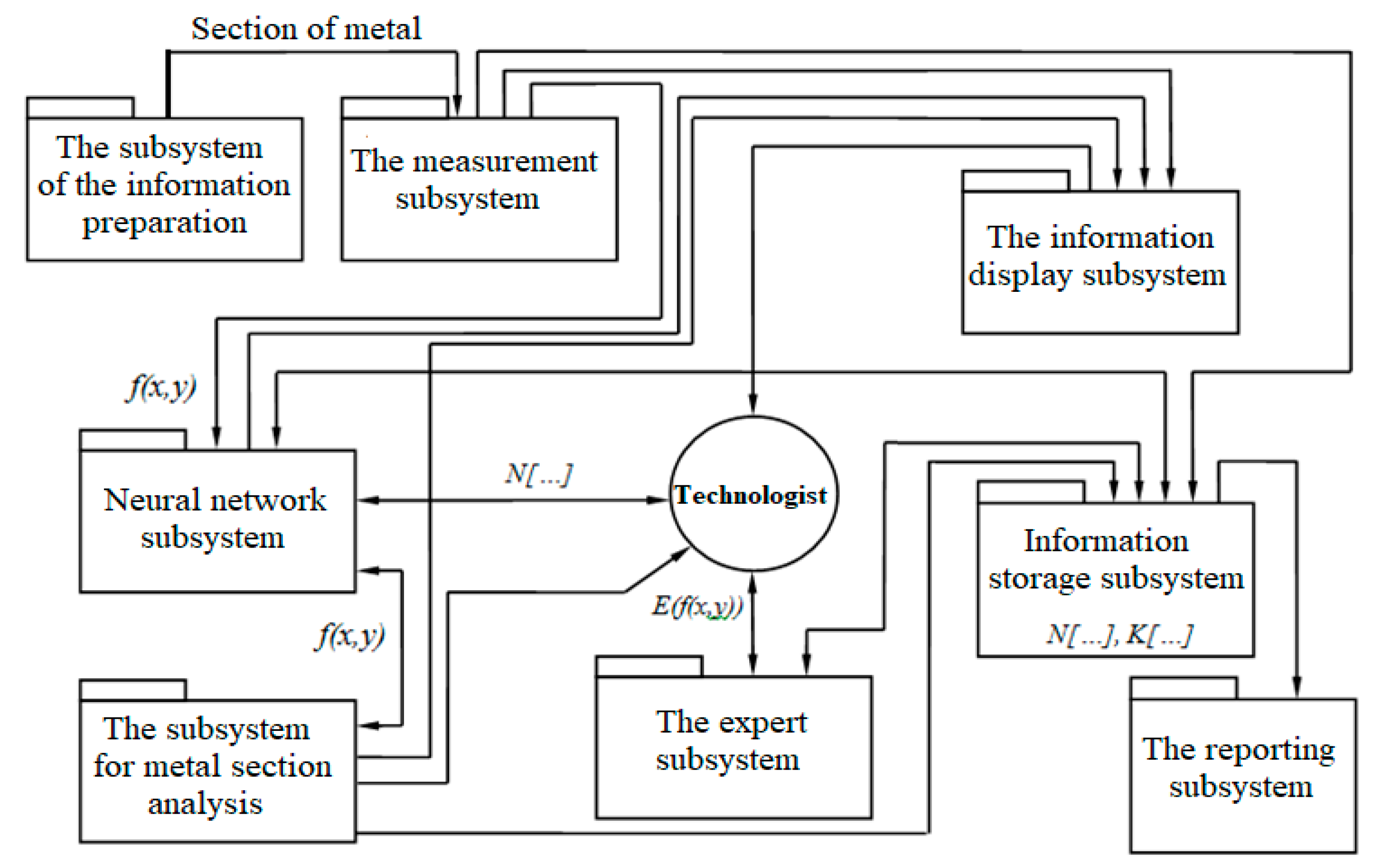
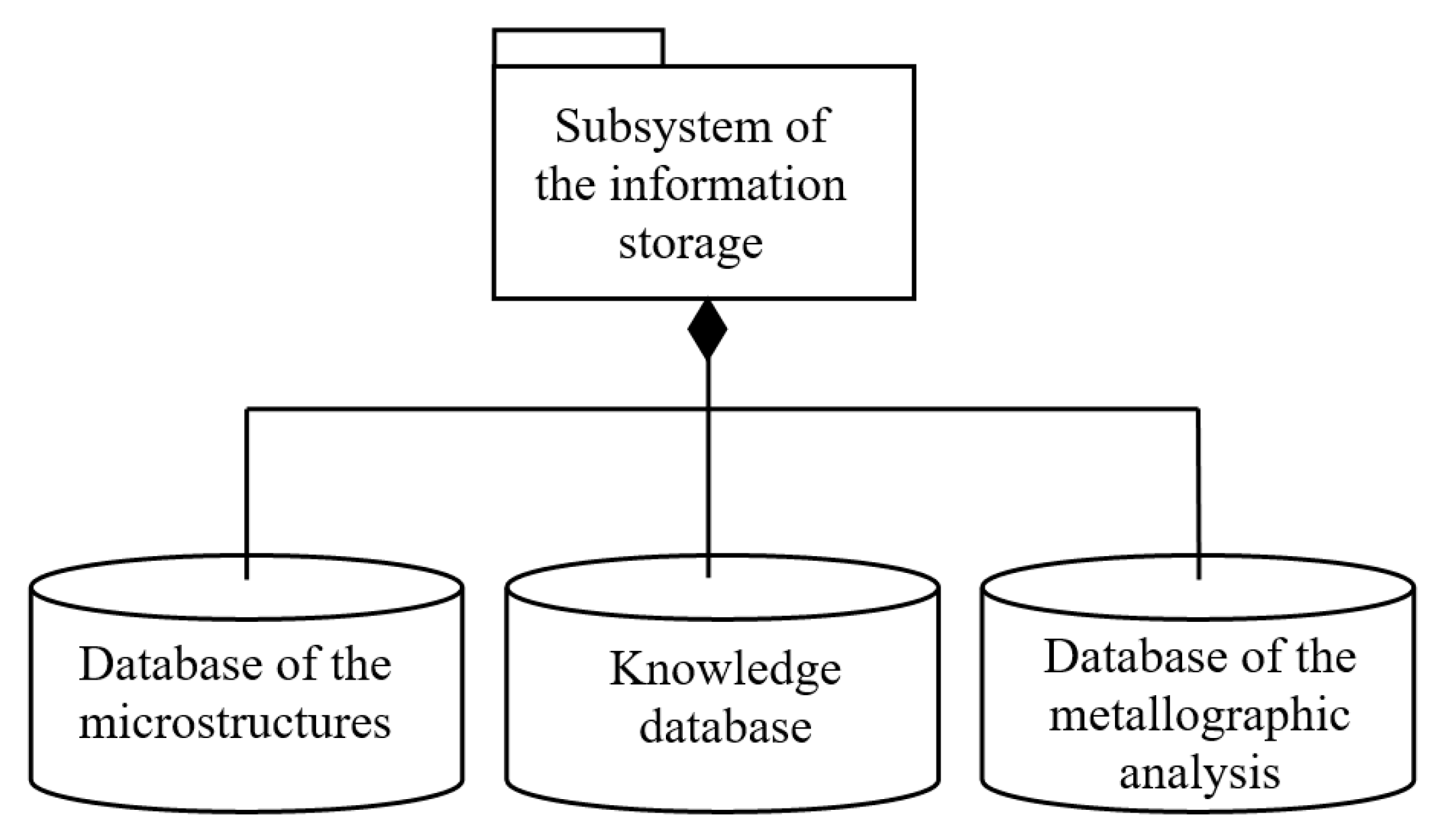
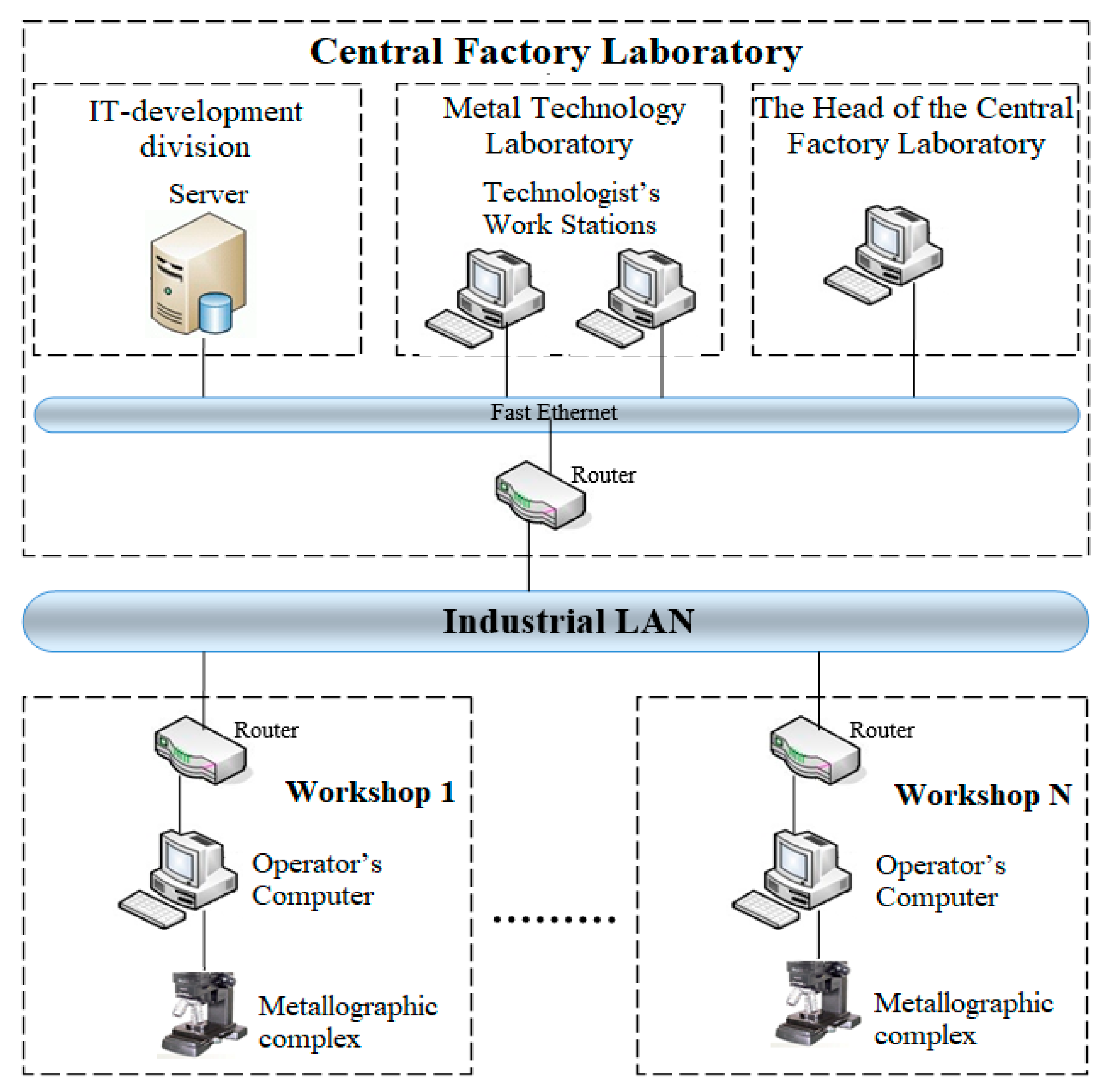
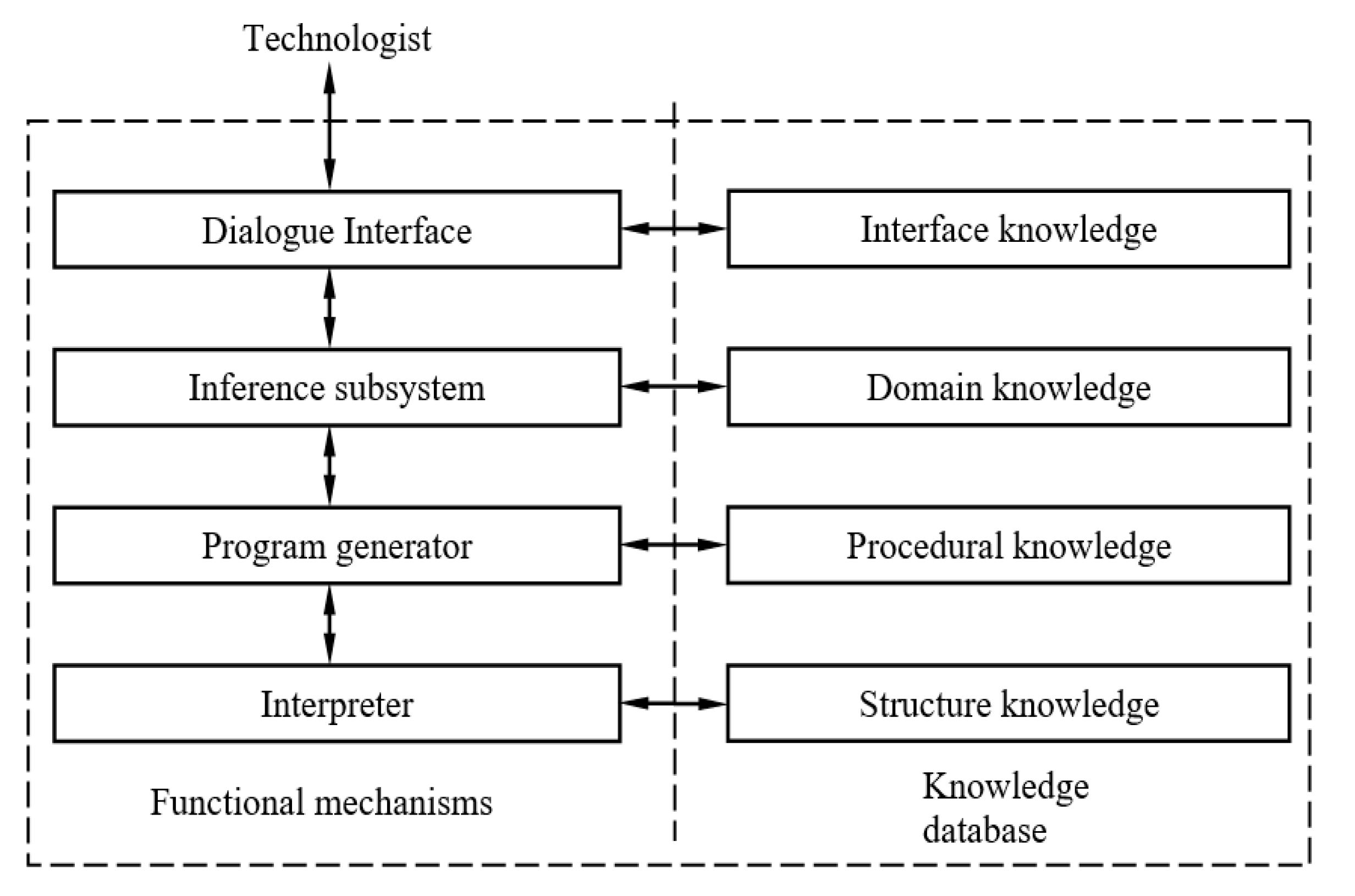
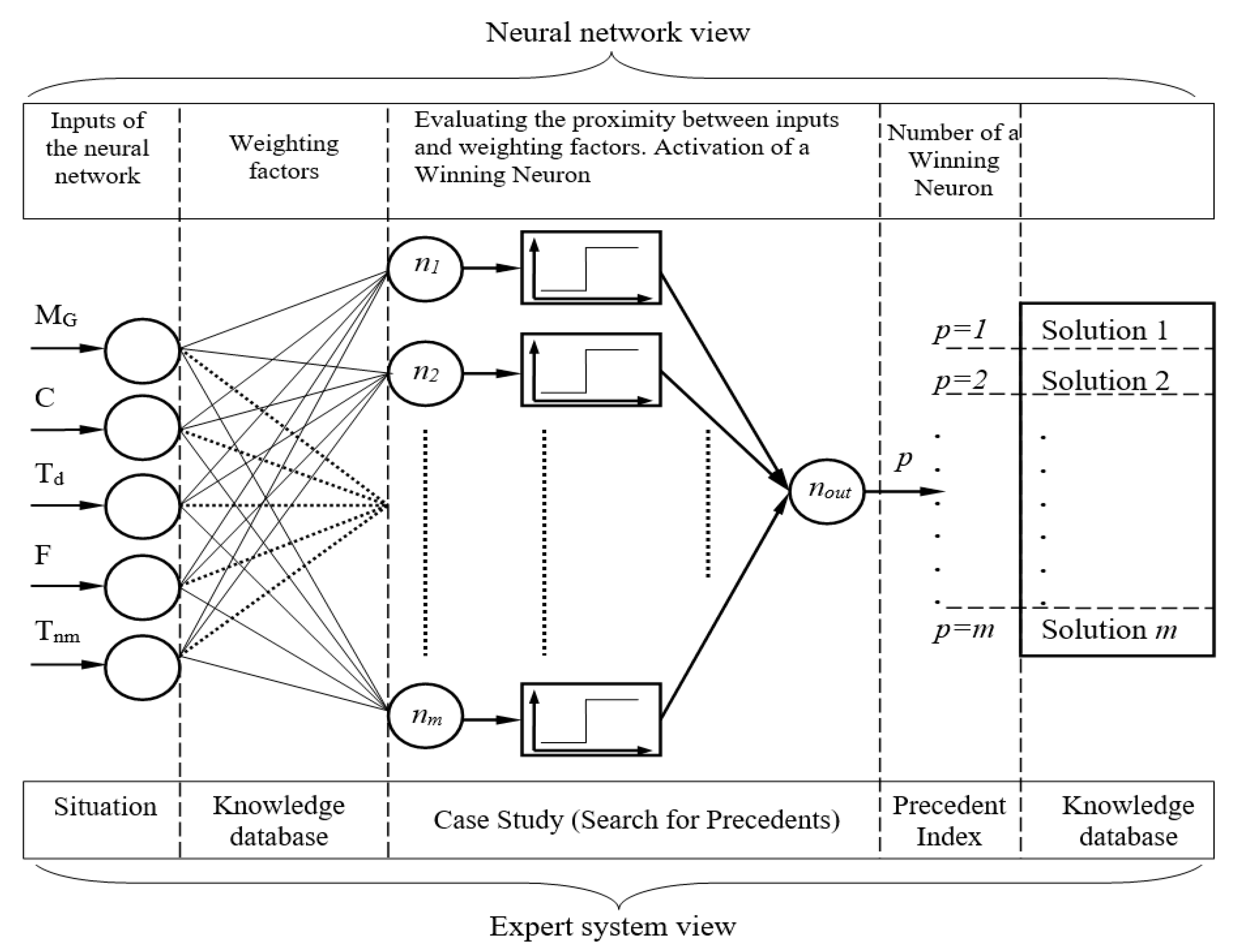
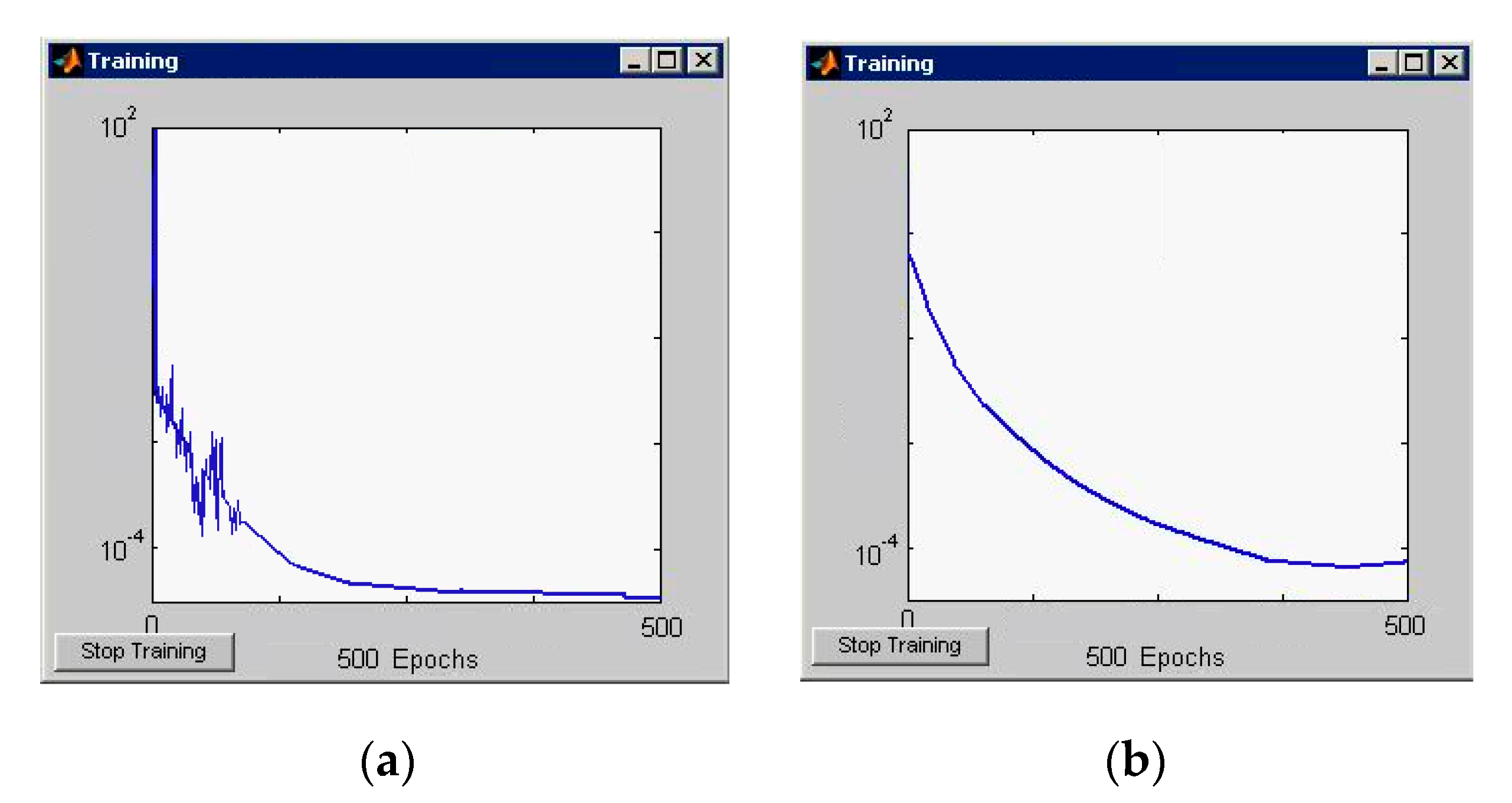
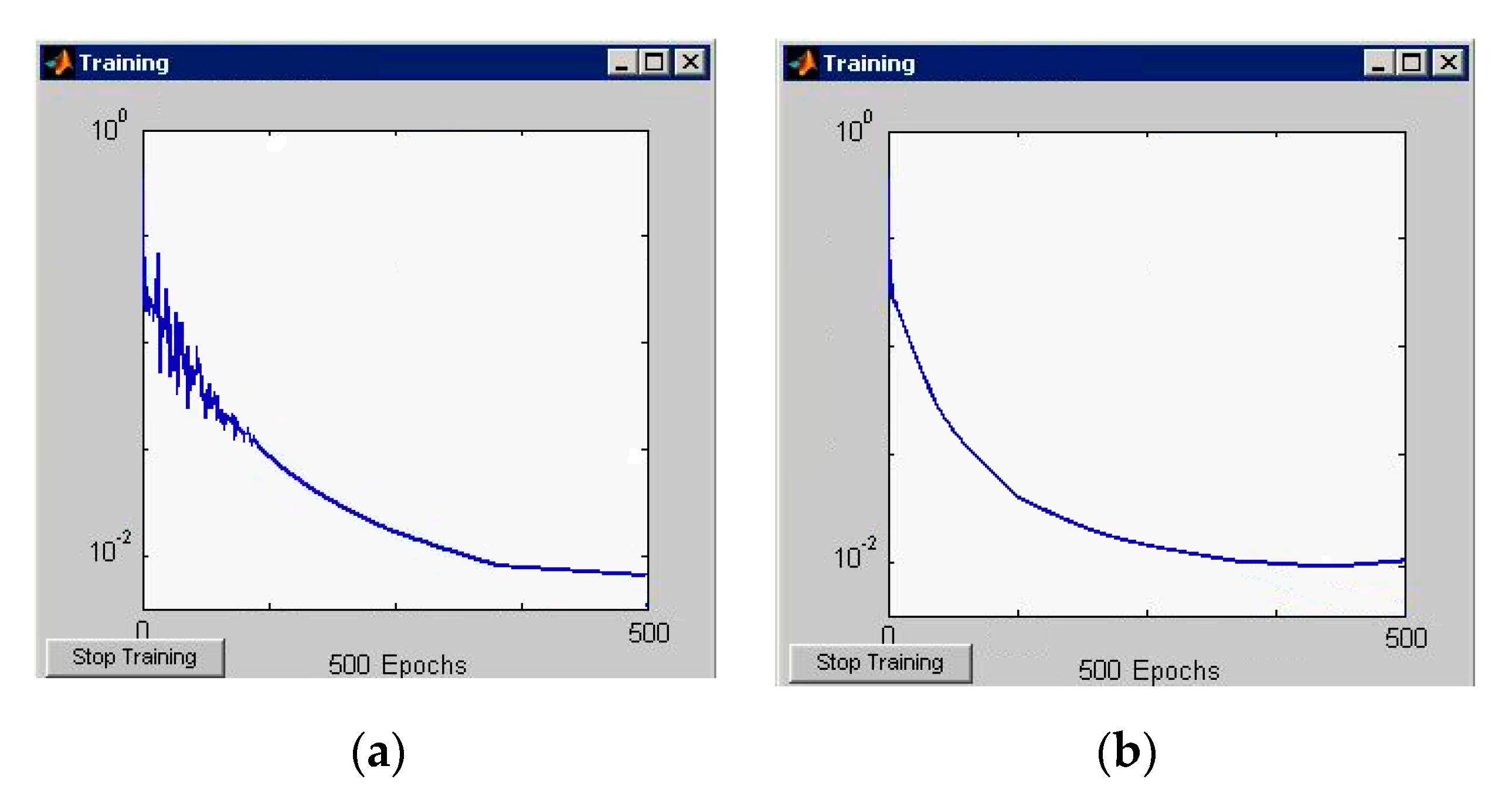
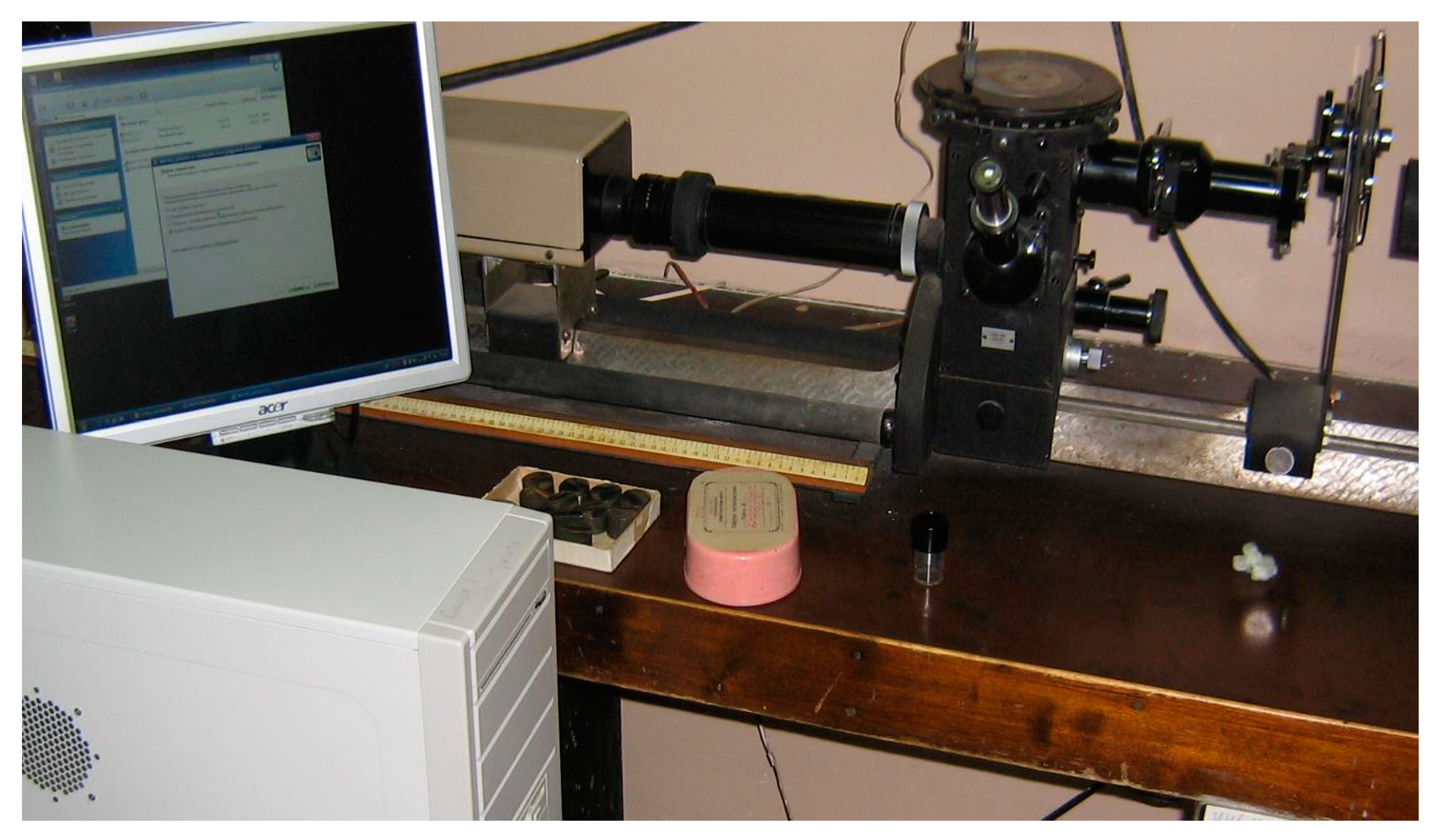
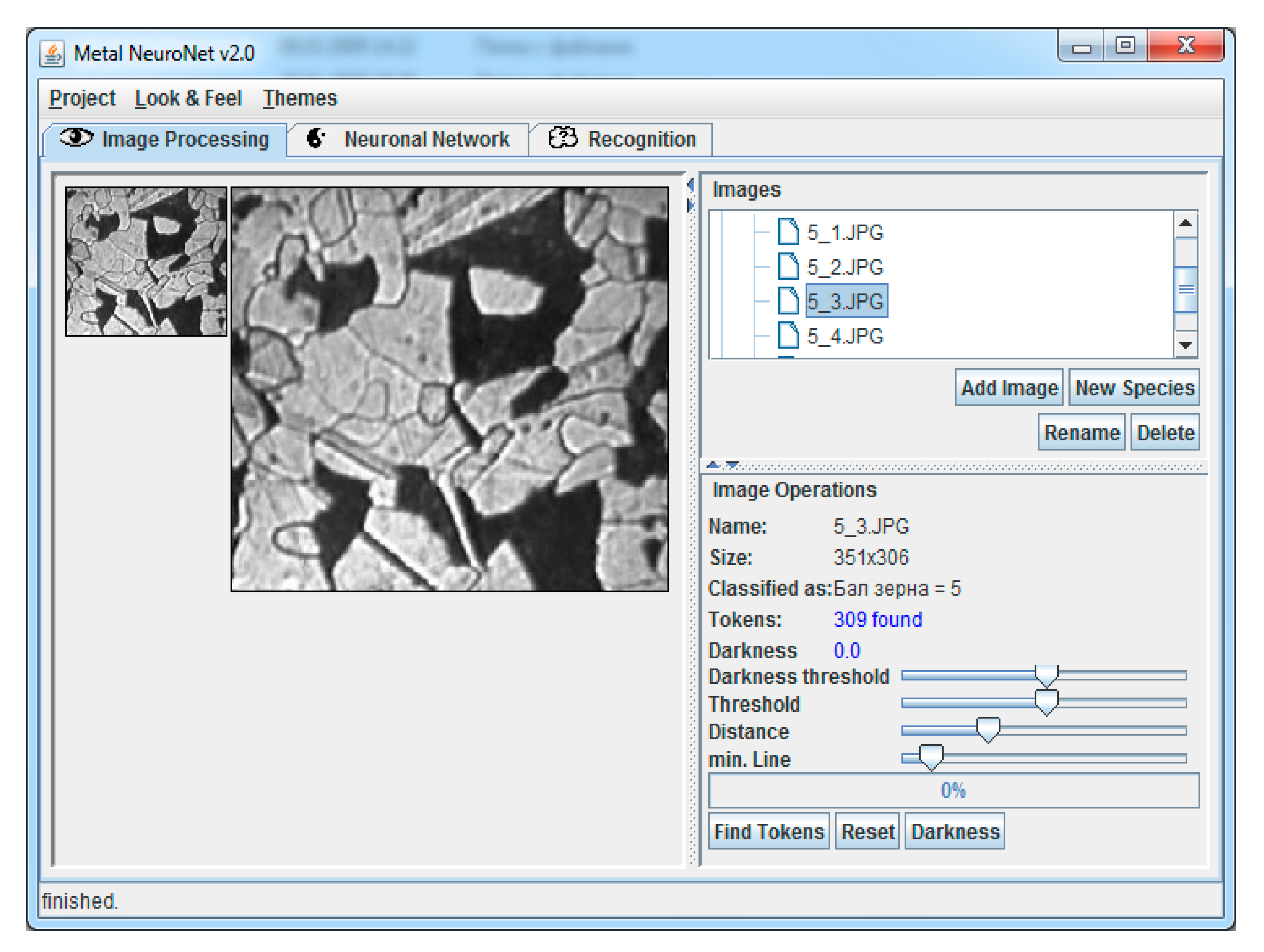
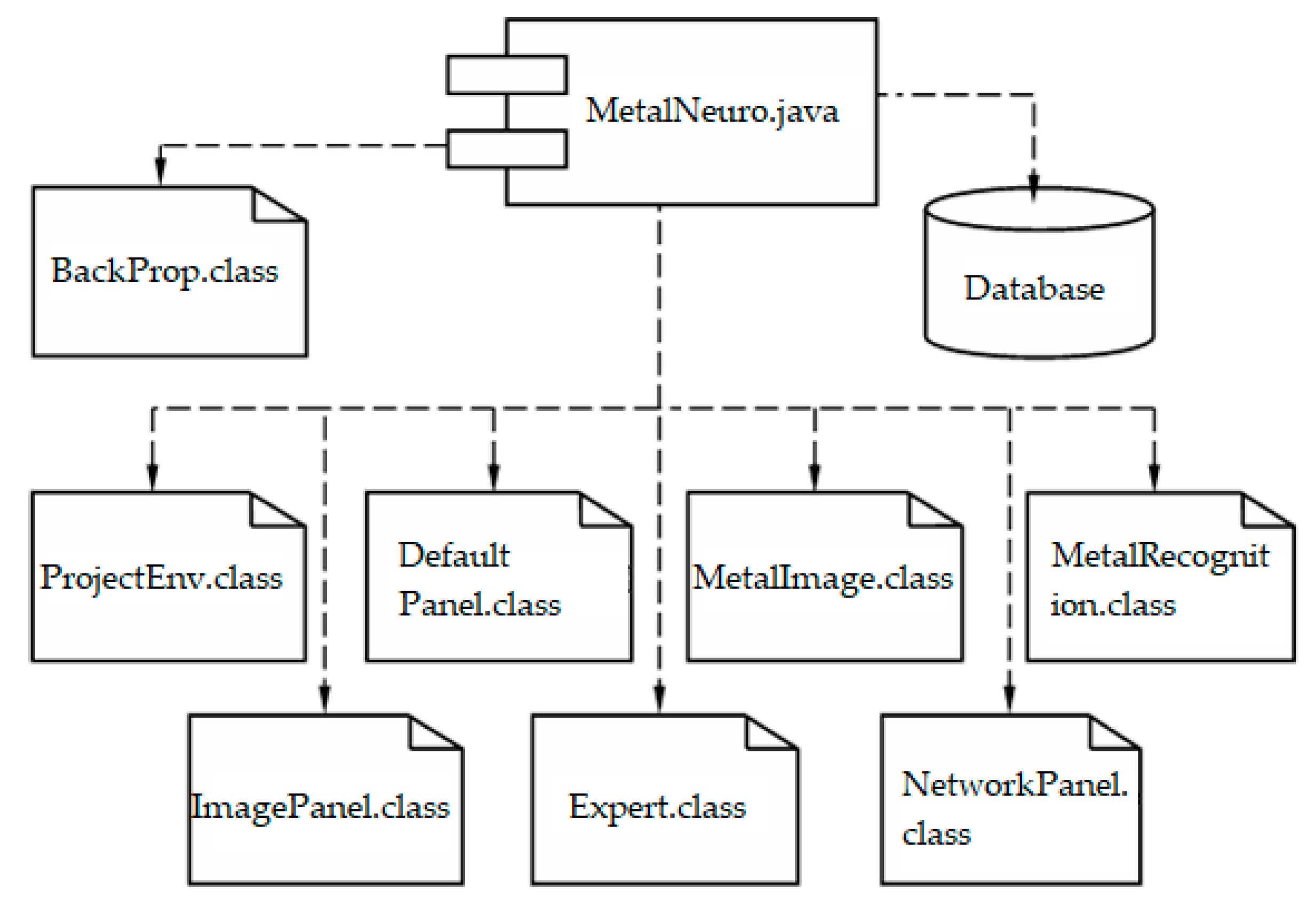
| Type of A Neural Network | Number of Training Epochs | Training Algorithm | Classification | |
|---|---|---|---|---|
| Ok | Error | |||
| RBF network | 500 | gd | 93.5 | 3.5 |
| RBF network | 500 | gda | 95.6 | 1.8 |
| RBF network | 500 | cgb | 93.4 | 3.9 |
| Four-layer perceptron | 500 | gd | 91.6 | 5.4 |
| Four-layer perceptron | 500 | gda | 91.5 | 4.9 |
| Four-layer perceptron | 500 | cgb | 92.8 | 4.5 |
| Characteristics of Steel 10ChSND (S420N) | The Total Amount of the Steel Images | The Number of Correct Recognized Steel Images | The Full Probability of Correct Alloy Image Recognition, % |
|---|---|---|---|
| Grain point | 231 | 224 | 93.1 |
| Martensite/troostite phase ratio | 121 | 118 | 95.6 |
| Ferrite/Perlite Phase Ratio | 121 | 119 | 92.3 |
| Sulphide point | 142 | 133 | 94.2 |
| Silicate point | 142 | 134 | 93.6 |
| Point of stitched (line) nitrides | 142 | 134 | 93.9 |
Publisher’s Note: MDPI stays neutral with regard to jurisdictional claims in published maps and institutional affiliations. |
© 2021 by the authors. Licensee MDPI, Basel, Switzerland. This article is an open access article distributed under the terms and conditions of the Creative Commons Attribution (CC BY) license (http://creativecommons.org/licenses/by/4.0/).
Share and Cite
Emelianov, V.; Emelianova, N.; Zhilenkov, A.; Chernyi, S. Application of Information Technologies and Programming Methods of Embedded Systems for Complex Intellectual Analysis. Entropy 2021, 23, 94. https://doi.org/10.3390/e23010094
Emelianov V, Emelianova N, Zhilenkov A, Chernyi S. Application of Information Technologies and Programming Methods of Embedded Systems for Complex Intellectual Analysis. Entropy. 2021; 23(1):94. https://doi.org/10.3390/e23010094
Chicago/Turabian StyleEmelianov, Vitalii, Nataliia Emelianova, Anton Zhilenkov, and Sergei Chernyi. 2021. "Application of Information Technologies and Programming Methods of Embedded Systems for Complex Intellectual Analysis" Entropy 23, no. 1: 94. https://doi.org/10.3390/e23010094
APA StyleEmelianov, V., Emelianova, N., Zhilenkov, A., & Chernyi, S. (2021). Application of Information Technologies and Programming Methods of Embedded Systems for Complex Intellectual Analysis. Entropy, 23(1), 94. https://doi.org/10.3390/e23010094







